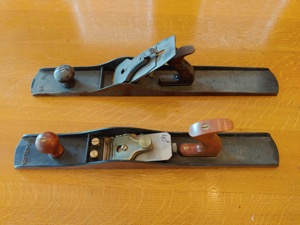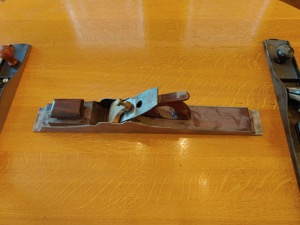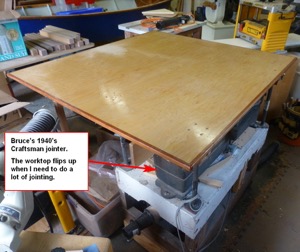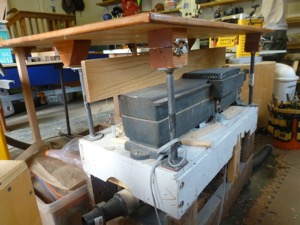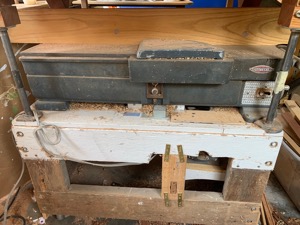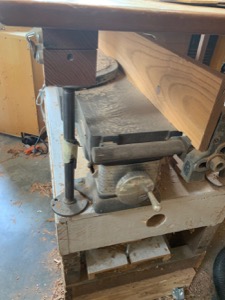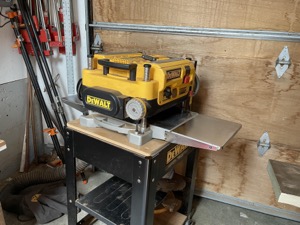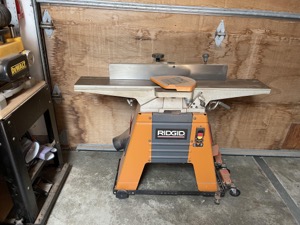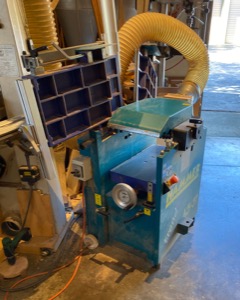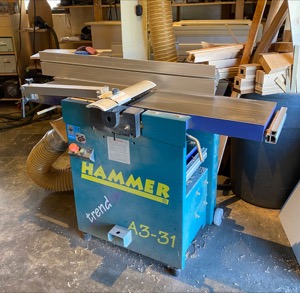Newsletter June 2021
President's Message
Covid shut things down early March last year and we had to cancel our March meeting, but since then we have had 15 Zoom meetings for which we thank Bruce Powell who, with his experience, was able to get us up and participating on Zoom.
In the beginning I was thinking of it as an experiment, not being sure it would work or not, however it turned out to be a great success and moved BAWA into a new era.
Over the last 15 months we have had interesting speakers from many places that were too far away to consider as speakers for our meetings in Foster City including: the LA area, San Diego, Santa Barbara and Fort Brag in California plus Minneapolis and the East Coast.
We have had many Show and Tells, maybe not a substitute for seeing the works in person, but with well created Power Point presentations showing intricate bits of the works. Many such as Greene and Greene couches and beds were not often shown at our meetings as the tendency was to show works you could bring to the meetings.
Paul Krenitsky started his Workshop Presentations a month or two before we shut down but by July last year they had evolved into Virtual Workshop Tours which were
very successful with many months having 10+ presenters.
Topics included: Easy Shop Aids, Small Parts Storage, Dust Collection, Shop planes, Bandsaws, Sharpening aids etc.
Jon Kaplan presented his Covid Woodworking or Keeping busy with Little Pieces of Wood and related small wood projects. He also told us every time you go into the workshop you should hand-cut a few dovetails as a warm up exercise.
Now we hope those totally Zoom meetings are a thing of the past.
August will be our first in-person meeting since February last year but before then we are having a BAWA Summer Picnic in July to celebrate moving passed this unfortunate phase.
I sympathize to our members and friends who live in areas still subject to Covid restrictions and wish you a speed passage to a safe level and back to normal
life.
Looking forward to seeing you all at our Summer Picnic.
Frank
(Contact at:
Frankramsay8@aol.com
-->
Top
June 2021 BAWA Zoom Meeting
The meeting was called to order by President Frank Ramsay.
Announcements:
New Members:
We were pleased to welcome Mark Hanson, a beginning woodworker, and David Millard, a returning member after a long absence and Guest Mike Pocock of San Rafael - Mike plans to join.
Jon Kaplan announced we have 43 paid members.
We are hoping that this is the last of our exclusively Zoom meetings
Next month, July, we will meet in person at Twin Pines Park in Belmont, for a picnic lunch.
(details: BAWA Summer Picnic Bruce Powell will be sending out invites)
August we are planning a "regular" meeting in Foster City but with the addition of having a Zoom link into the meetings so that our members and Guests who are not in easy reach of Foster City can still join the meeting. As we will be using Zoom we expect that future guest speakers may be from outside our normal catchment area.
More details :BAWA Picnic
Top
Featured Speaker
Paul Schurch
Master furniture maker and teacher
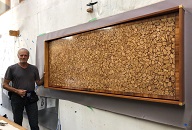
Paul with his artwork "Coffee Beans"

Paul with his artwork "Coffee Beans"
Paul Schurch was our guest speaker. He apprenticed in Europe and lives in Santa Barbara. He specializes in high end custom furniture. He has taught at numerous colleges around the country.
His talk was about veneering large surfaces. He recommends laminating onto MDF or Baltic birch plywood, which are stable and not likely to warp or expand and contract with changes in humidity and temperature. He always laminates on both sides of the substrate to minimize warping. When he wants to book match sheets
of veneer he uses the Festool Track Saw with a metal cutting blade to prepare the edges that will be joined. The metal cutting blade has a negative rake that prevents
tear out. When cutting on the scroll saw, he can stack as many as 16 layers at once. The blade is set to 90 degrees to the table when stack cutting.
He has two scroll saws, one with a 20" throat and one with a 30" throat. He often has to make pieces that are larger than the scroll saw throat, so he breaks the piece up into manageable pieces, being careful to arrange the joints where they won't be noticeable.
He uses Gorilla Glue, because it does not contain water and will not swell the wood. The secret to using Gorilla Glue is to spread it very thinly. He uses hot sand to shade the edges of some of the wood pieces and the shading can take longer than cutting out the pieces.
Vacuum bags of various sizes are used to clamp the pieces during glue up. He mentioned that vacuum bagging does not work as well at higher elevations (for
instance in Colorado) due to reduced air pressure.
Once the pieces are glued to the substrate, he uses a belt sander, with a frame attached, to level out the veneer.
A 100 grit belt is used. His belt sander is a 220V Festool that came with the frame. Unfortunately, you can't buy a 220V sander in the USA. The frame keeps the sander
level so it won't cut right through the veneer.
He usually buys commercially available veneer, but will occasionally make his own, especially if he wants thicker veneer
or veneer made from wood that is not commercially available. When cutting out the pieces, he will use a veneer saw or a chisel or knife to make cuts when he cannot
use the scroll saw. When a piece requires lettering or repeated patterns, he will send a file out to be laser cut.
One source for veneer: certainlywood.com
Check out Paul's website:veneerartist.com
Examples of Paul's work:
Vacuum bags of various sizes are used to clamp the pieces during glue up. He mentioned that vacuum bagging does not work as well at higher elevations (for instance in Colorado) due to reduced air pressure.
Once the pieces are glued to the substrate, he uses a belt sander, with a frame attached, to level out the veneer. A 100 grit belt is used. His belt sander is a 220V Festool that came with the frame. Unfortunately, you can't buy a 220V sander in the USA. The frame keeps the sander level so it won't cut right through the veneer.
He usually buys commercially available veneer, but will occasionally make his own, especially if he wants thicker veneer or veneer made from wood that is not commercially available. When cutting out the pieces, he will use a veneer saw or a chisel or knife to make cuts when he cannot use the scroll saw. When a piece requires lettering or repeated patterns, he will send a file out to be laser cut.
One source for veneer: certainlywood.com
Check out Paul's website:veneerartist.com
Examples of Paul's work:
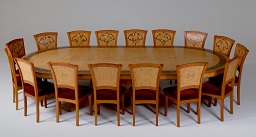
Blackberry Table
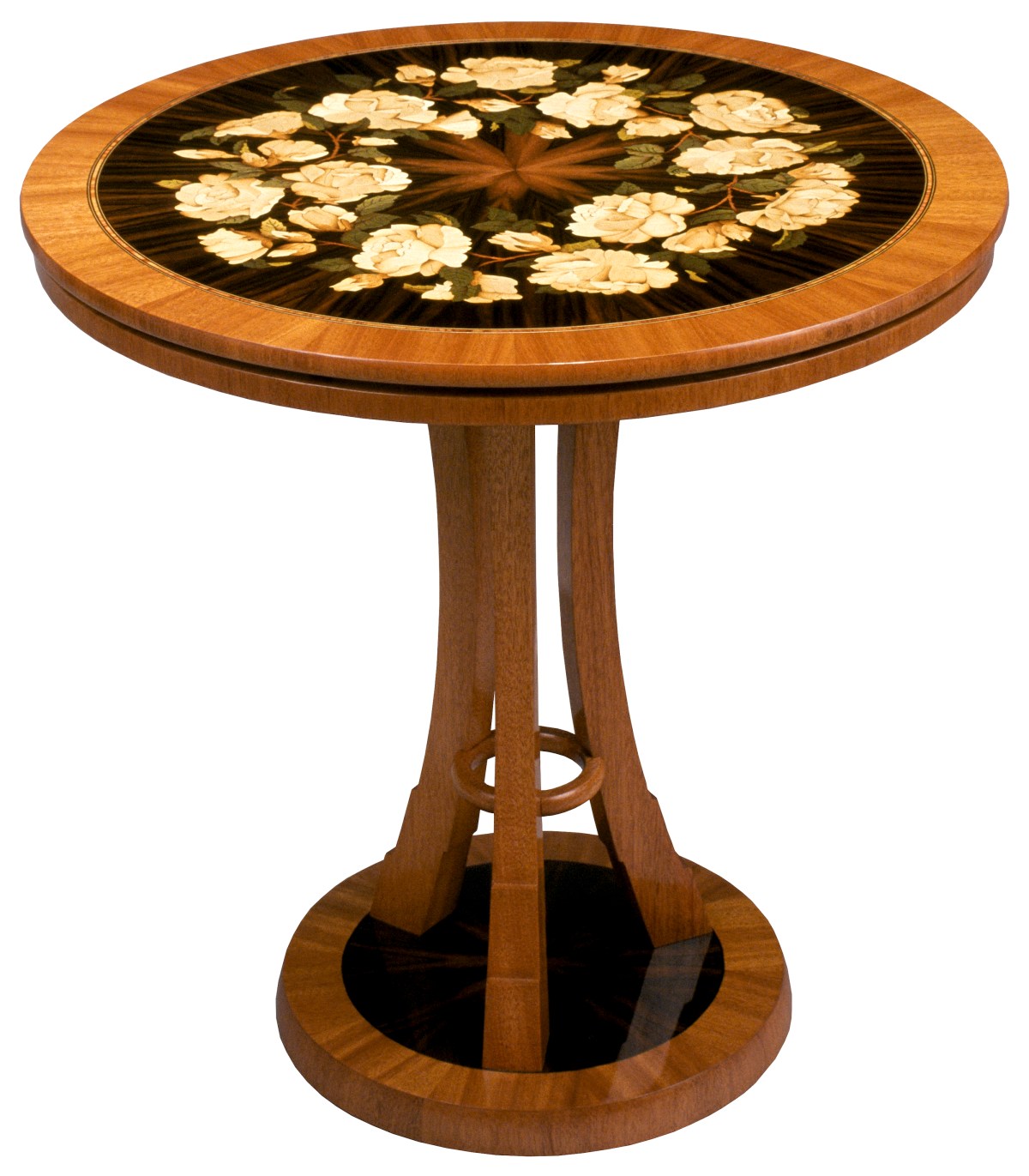
Bouquet of Flowers
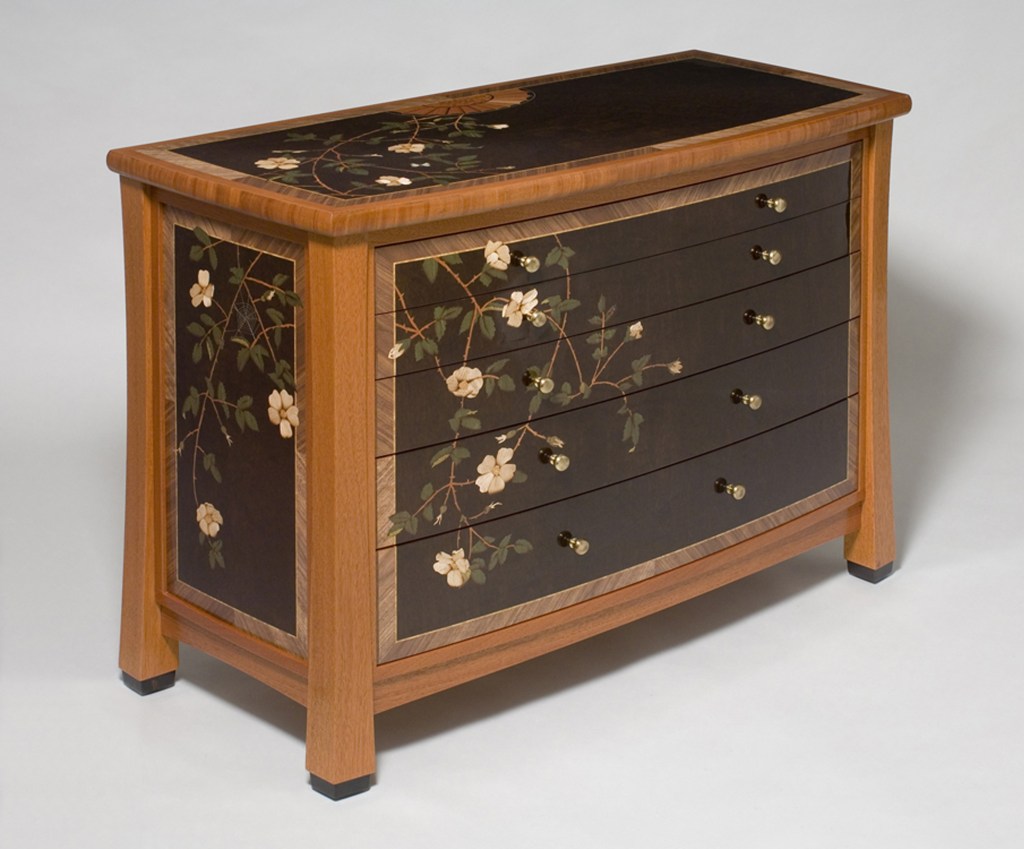
Rose Chest Cabinet
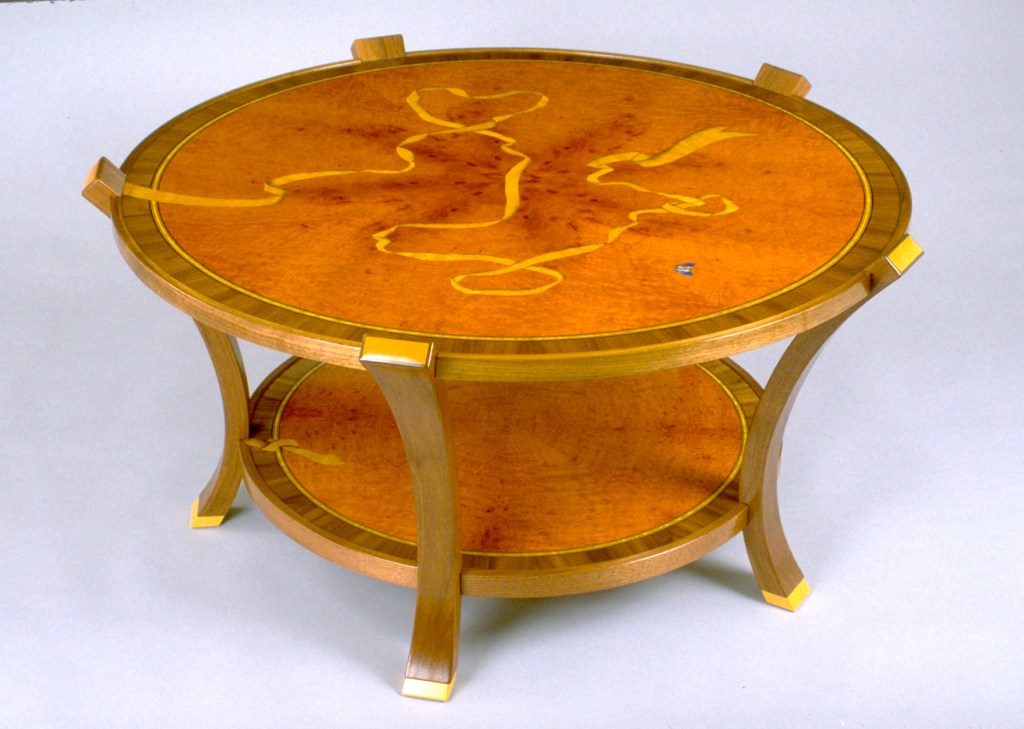
Ribbon Table"
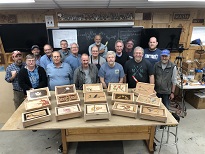
Attendees at a Marquetry Class
"The jointer is an 8" Grizzly with carbide blades.
My planer is a DeWalt 12" on a mobile base/cabinet.
One picture shows a 'sled' on top. This lets me use the planer as a 12" jointer.
here are small wedges that allow you to adjust the cross blocks to 'level' the plank.
Then the sled is sent through the machine
to flatten it.
The sled is removed and the plank is turned over and sent through the machine like normal.
I use two short roller stands (front/ back) to support the sled/plank."
Frank Ramsay
Frank has a Grizzly jointer with a helical cutter that has carbide inserts that can be rotated to use any one of four cutting edges.
No blade height adjustment is needed when rotating the inserts to expose a new edge. Helical cutters are much quieter than the straight cutters
Lloyd Worthington-Levy




